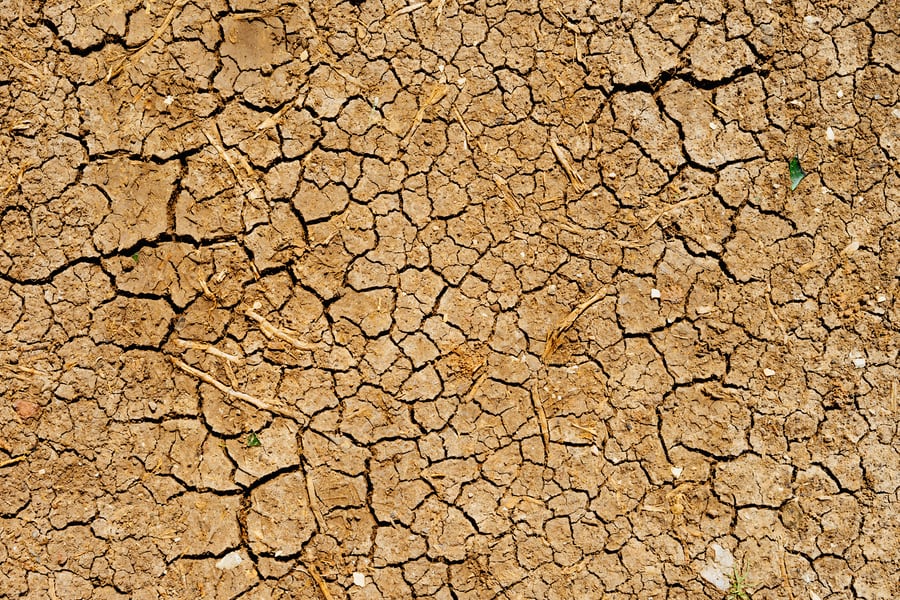The US megadrought: is climate change to blame?
A megadrought which scientists say could be the worst to hit the western US in recorded history is currently underway. The severity of the drought is thought by some researchers to be worsened by rising temperatures and climate change, in particular by the effects of global warming caused by human activity. Importantly, some scientists argue it is too early to say with certainty that the region is really experiencing a true megadrought. However, it has the potential to spread from Oregan and Montana, through the Four Corners and into West Texas and northern Mexico, indicating its threatening nature.
What is a megadrought?
A megadrought is a naturally occurring event lasting over a number of decades, or even centuries. This US megadrought is believed to have begun in the year 2000, and is still continuing today. A scientific paper entitled “Large Contribution from Anthropogenic Warming to an Emerging North American Megadrought” states that from 800-2018AD, there have been around 40 droughts in western US, only four of which fell under the category ‘megadrought’. These occurred in the late 800s, the mid 1100s, 1200s, and late 1500s.
A megadrought is a naturally occurring event lasting over a number of decades, or even centuries
What did the study find?
A group of researchers used methods such as tree ring analysis to reconstruct soil moisture data for the past in order to study droughts in history and create a comparative tool for droughts today. Supporting evidence was also found in medieval tree stumps, the abandonment of medieval settlements, and in lake deposits. The study concluded that the current period of drought is already worse than three of the four megadroughts recorded. Lead author Dr Park Williams said: “The first two decades of this drought look just like the first two decades of all of the megadroughts”. “In fact, it is essentially tied with the worst two decades of the worst of the megadroughts”, Dr. Williams said. These findings led researchers to consider the climate, and how human activity may have impacted a naturally occurring event.
Can it be linked to climate change?
Whilst megadroughts are naturally occurring, it is suggested by the authors of this study that the current megadrought has been considerably worsened by climate change. Important to this argument is the El Niño/La Niña weather phenomenon. Dr Williams explained that when the tropical Pacific Ocean gets La Niña-type conditions, southwestern US and northern Mexico have dry ones. This has been seen over the last two decades. Due to climate change, the current drought has been intensified, with temperatures in the western US rising by 1.2C since 2000. Jason Smerdon, a climate researcher and a co-author of the new research has said that human-caused global warming is responsible for approximately half of the severity and pace of the emerging megadrought. More specifically, global warming caused by human activity is responsible for 47 percent of the severity of the current drought by drawing moisture from the soil and plants.
Due to climate change, the current drought has been intensified, with temperatures in western US rising by 1.2C since 2000
Why does it matter?
The occurrence of more severe megadroughts undoubtedly threatens natural balance in a number of ways. Lake Powell and Lake Mead, which are the two most important water reservoirs in the region have shrunk during the drought. There has also been an increase in the number of wildfires. “At any given year, there are over ten times more forest area burns than we would have expected in a given year, 40 years ago,” Dr Williams said. Furthermore, the drought negatively impacts agriculture. To combat this effect, groundwater has increasingly been used. However, the deeper people dig into reserves, the longer it takes for them to replenish. Additionally, river flows are diminishing and dangerous dust storms are on the rise. The western drought could eventually affect adjacent regions, causing precipitation deficits across North America, making the impacts more geographically widespread.
The western drought could eventually affect adjacent regions, causing precipitation deficits across North America, making the impacts more geographically widespread
These frightening developments are unfolding also in South America, especially in central Chile. A 10-year drought in parts of the Andes Mountains has cut some river flows by up to 80 percent. Previous studies by researchers at Columbia University predicted that the 21st century has a 90 percent chance of seeing a drought lasting at least 25 years. Smerdon argues that this demands a rethinking about how to manage resources, particularly water. He suggests a transition to less water-intensive crops, or changes in beef production, which is a water-intensive process. Tourism will also be affected as there will be less snow for skiing and water for rafting, making this not only an ecological crisis, but potentially an economic one. Smerdon concludes that the real long-term solution is to halve greenhouse gas pollution.”It’s like with the coronavirus pandemic, we have to flatten the curve of global warming. We do that by removing the emissions”, Smerdon said.
Whilst there is no complete consensus among scientists on the existence of a current megadrought, it is undoubted that there is water stress in the region, and that this will worsen in the future due to climate change.

Comments